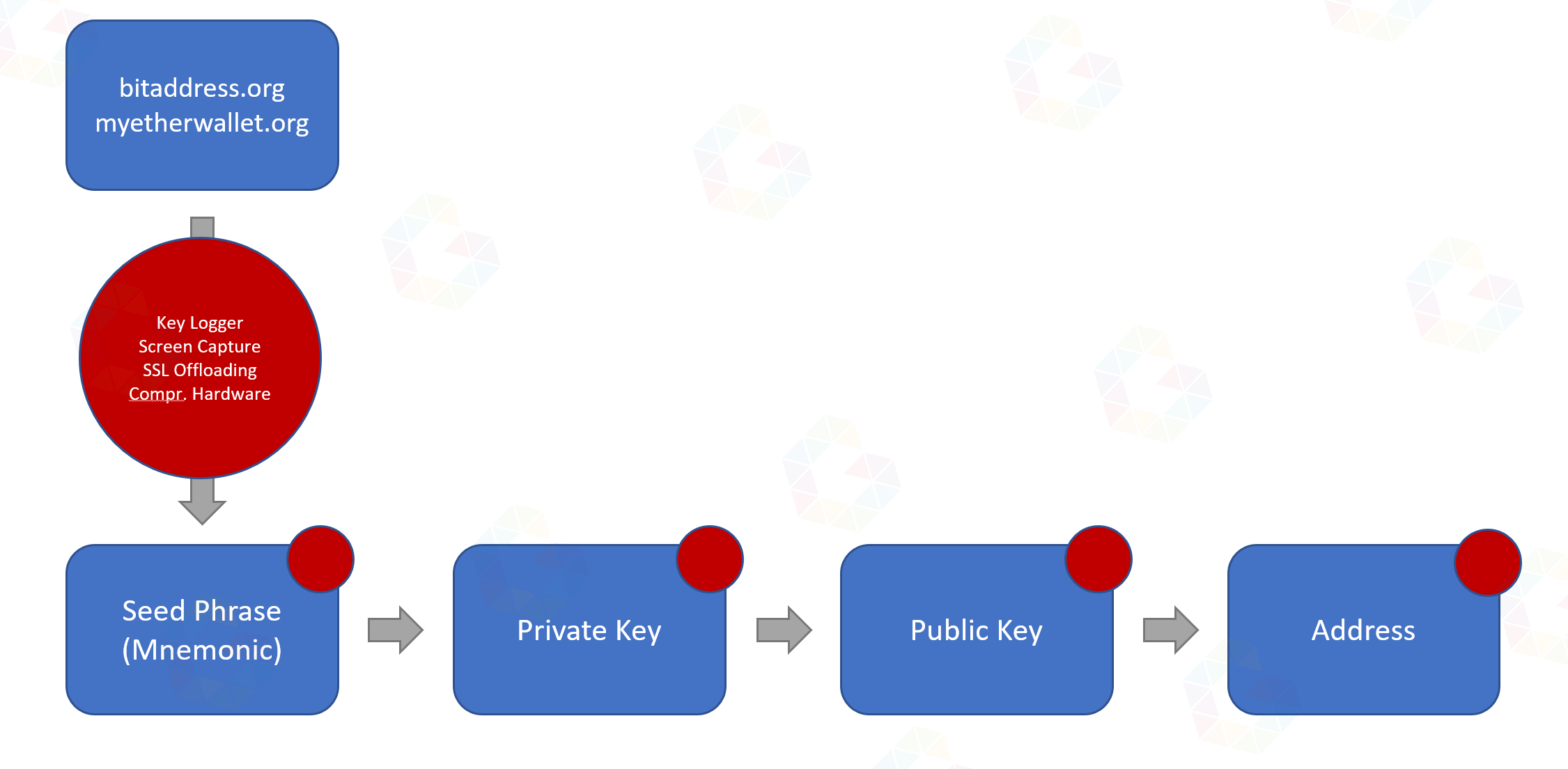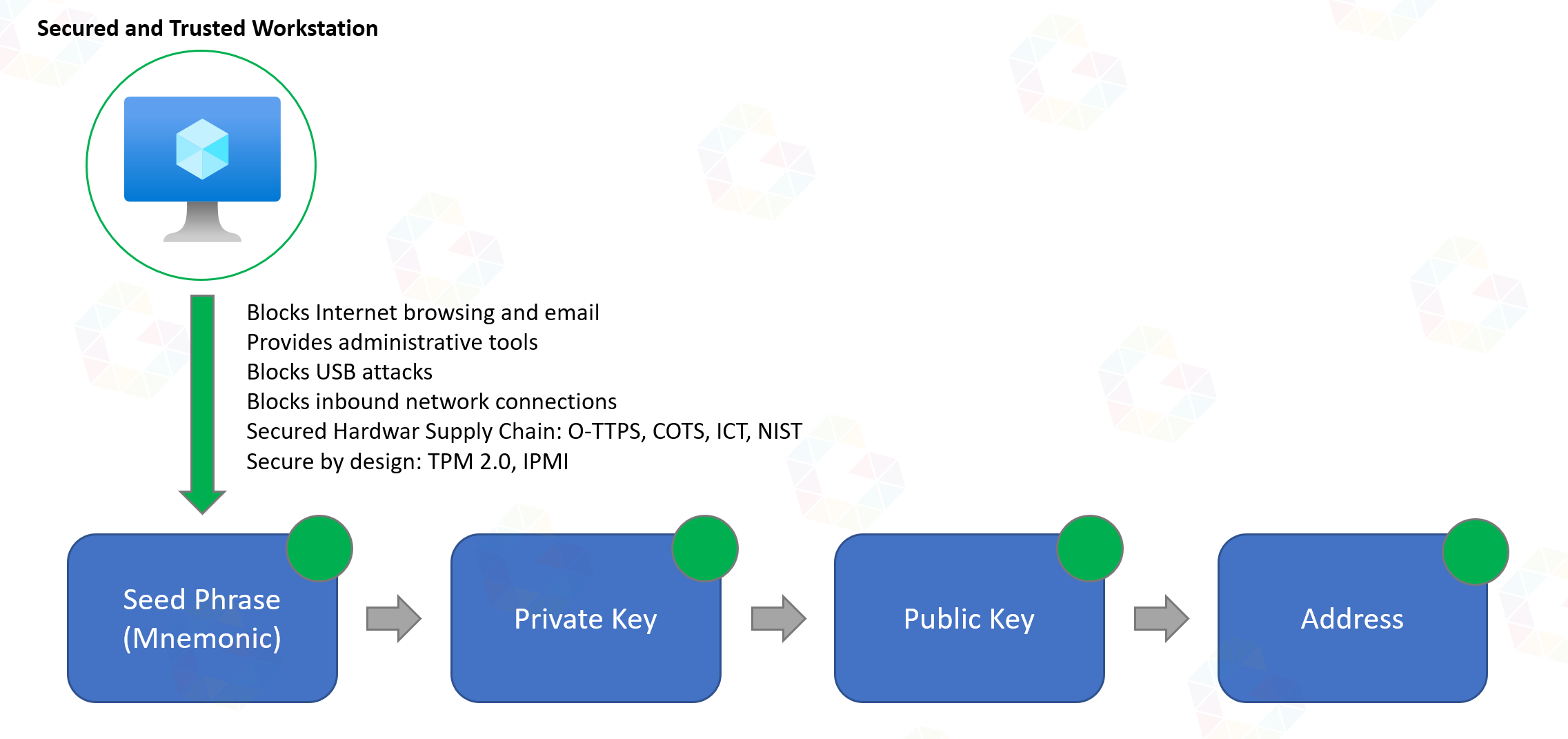Cold Crypto Wallets and MITM Attacks
Are my cold wallet and the generated addresses really secure? I would like to familiarise you with the security topics of cold wallets and what you should pay attention to.
Cold Wallet
A wallet is a collection of private keys, like a key ring. It holds copies of each private key and each private key’s corresponding address. A private key is necessary to spend from an address. Other than a hot wallet, a cold wallet is not connected to the internet and therefore stands a far lesser risk of being compromised. Cold wallets can also be referred to as offline (paper) wallets or hardware (USB) wallets.
Man-in-the-Middle Attack (MITM)
A man-in-the-middle attack (MITM) is a general term for when a perpetrator infiltrates a conversation between a user and an application to either eavesdrop or impersonate one of the two parties to make it appear that a normal exchange of information is underway.

Figure 1: Illustration of a MITM attack.
Case 1
Let’s assume you generate a wallet address (hashed public and private key) via bitaddress.org or myetherwallet.com and during the generation or transmission a MITM attack occurs, be it through JavaScript hijacking, SSL offloading, key/screen logging or even compromised hardware. This key pair would thus be compromised and insecure, as the attacker would possess both key pairs or, in any case, the private key.

Case 2
Let’s assume you use a hardware wallet like a Nano Ledger S/X or BitBox, which generates the public and private key for you using the manufacturer’s software and uses a recovery mnemonic/phrase as the seed. Key/screen logging would also be fatal here and keys and mnemonic could be caputred and hence would be visible to attackers.

Conclusion
Ultimately, the only option is to manually create your own address using (BIP32/BIP39/BIP38/BIP44) on a secure, offline and trusted device, i.e. not a mobile phone or workstation with internet.

If I had several higher 6/7-digit amounts in Ethereum and Bitcoin and I wanted to make sure for newly created addresses that mnemonic and private keys were not seen by any other person from the time of generation and safekeeping, then I think this is definitely a safer way than just quickly generating an address via app or online.
Of course, there are far more paranoid ways, but I don’t think I’m far off the mark.
If you want to know how to create a secure wallet address, check out my post Create a secure and anonymous Crypto Wallet.
